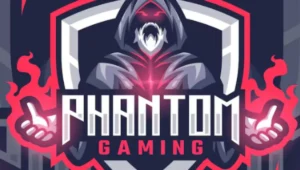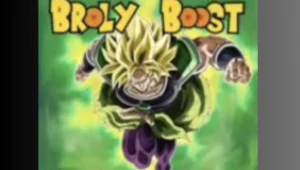Monk 5e in Dungeons & Dragons (D&D) 5e are more than just martial artists. They are spiritual warriors who use their agility, Ki, and discipline to outmaneuver foes. Whether you’re a beginner or a seasoned player, this guide will help you explore every aspect of the Monk class and create an unstoppable character.
Table of Contents
What Makes the Monk 5e Unique?
Monks are agile fighters known for their incredible speed, Martial Arts prowess, and ability to channel mystical energy through Ki Points. They thrive in combat, blending unarmed strikes, advanced mobility, and defensive techniques to dominate the battlefield. Unlike other classes, Monks don’t rely on heavy weapons or armor, making them an exciting choice for creative players.
Key Features of the Monk 5e Class
Monks bring unique abilities to any campaign, such as:
- Unarmored Defense: High defense without wearing armor.
- Martial Arts Mechanics: Scaled damage and versatile combat options.
- Ki Points: A mystical resource that unlocks special abilities like Flurry of Blows and Stunning Strike.
Let’s dive deeper into what makes Monks an exceptional class.
Monk Class Features and Abilities
Monks use a d8 hit die, giving them decent survivability. They are proficient in Strength and Dexterity saving throws, along with simple weapons, shortswords, and unarmed strikes. Their defensive abilities shine through with Evasion and Unarmored Defense.
Martial Arts Mechanics
Martial Arts allows Monks to:
- Use Dexterity instead of Strength for attack rolls.
- Make unarmed strikes as bonus actions.
- Scale their unarmed damage as they level up.
This feature ensures Monks remain powerful and effective in melee combat throughout their journey.
Ki Points: The Monk’s Core Power
Ki is the essence that fuels a Monk’s mystical abilities. Key powers include:
- Flurry of Blows: You can make two unarmed attacks as a bonus action.
- Step of the Wind: Increase mobility by doubling jumps or disengaging from foes.
- Stunning Strike: Temporarily incapacitate enemies.
Proper management of Ki Points is crucial for maximizing the Monk’s impact in battle.
Movement Features
Monks are the fastest class in D&D 5e. With Unarmored Movement, they gain additional speed, allowing them to scale walls and even move across water at higher levels. Their agility makes them ideal for exploration and tactical repositioning.
Monastic Traditions (Subclasses)
Monks have several subclasses, known as Monastic Traditions, each offering unique abilities. Here’s a breakdown:
Way of the Open Hand
This subclass emphasizes unarmed combat and crowd control. It provides abilities like:
- Open Hand Technique: Push or trip enemies with your strikes.
- Quivering Palm: A devastating ability to take out foes instantly.
Way of Shadow
Shadow Monks excel in stealth and deception. They gain abilities like:
- Shadow Step: Teleport in dim light or darkness.
- Darkvision: Enhanced sight for sneaky missions.
Way of the Kensei
Perfect for players who want weapon mastery, Kensei Monks use weapons as extensions of their Martial Arts. They shine with:
- Agile Parry: Improved defense with melee weapons.
- Sharpen the Blade: Boost weapon attacks with Ki.
Way of the Four Elements
Combining martial arts with elemental power, this subclass allows Monks to cast spells like Burning Hands and Water Whip using Ki Points.
Building an Effective Monk Character
Creating a powerful Monk involves smart choices during character creation. Here’s what to focus on:
Best Races for Monks
- Wood Elf: High Dexterity and increased movement speed.
- Human Variant: Flexible stat boosts and access to feats.
- Half-Orc: Enhanced survivability and bonus melee damage.
Prioritizing Ability Scores
- Dexterity: Essential for attack rolls, damage, and AC.
- Wisdom: Powers Ki abilities and boosts saving throws.
- Constitution: Improves hit points and survivability.
Skills and Backgrounds
Choose skills that complement the Monk’s agility and awareness, such as:
- Acrobatics for mobility.
- Stealth for sneaky tactics.
- Insight to read opponents.
Backgrounds like Hermit or Outlander enhance roleplaying opportunities and provide additional skill proficiencies.
Monk Weapons and Equipment
Best Weapons for Monks
Monks are proficient with specific Monk Weapons, including:
- Quarterstaff: Versatile and powerful for melee combat.
- Shortsword: Ideal for precision strikes.
For Kensei Monks, weapons like longbows and longswords expand their combat versatility.
Magic Items to Look For
Boost your Monk’s effectiveness with these items:
- Bracers of Defense: Increase AC without armor.
- Amulet of Health: Boosts Constitution for survivability.
- Staff of Striking: Adds extra damage in melee combat.
Combat Strategies and Advanced Tactics
Effective Use of Ki
- Use Stunning Strike on powerful enemies to turn the tide of battle.
- Save Ki for critical moments, balancing offense and defense.
Tactical Positioning
Monks excel in mobility. Use Step of the Wind to reposition strategically or chase fleeing enemies. Exploit their speed to control the battlefield.
Defensive Techniques
- Evasion helps you avoid damage from area-of-effect attacks.
- Deflect Missiles turns ranged attacks into opportunities for counterattacks.
Monk Progression and Leveling Tips
Level-Up Highlights
- Extra Attack (Level 5): Double your offensive power.
- Diamond Soul (Level 14): Gain proficiency in all saving throws.
- Empty Body (Level 18): Turn invisible and resist damage.
Feats to Consider
- Mobile: Boosts speed and allows disengagement.
- Alert: Increases initiative for early action in combat.
- Tough: Improves hit points, increasing survivability.
Roleplaying a Monk
A Monk’s story can add depth to your campaign. Consider these tips:
- Tie their discipline to a Monastic Order or spiritual journey.
- Highlight their internal conflict between discipline and action.
- Use their Ki abilities as storytelling tools, reflecting their growth.
Conclusion
Monks in D&D 5e offer a dynamic mix of martial prowess and mystical abilities. From their Martial Arts mechanics to versatile Monastic Traditions, they excel in combat and exploration. Whether you prefer the stealthy Shadow Monk, the weapon-savvy Kensei, or the elemental Four Elements Monk, the possibilities are endless. With this guide, you’re ready to master the Monk class and bring your adventures to life.
FAQs
What is the best race for a Monk in D&D 5e?
Wood Elves and Human Variants are excellent choices due to their Dexterity and versatility.
How do Ki Points work for Monks?
Ki Points fuel special abilities like Flurry of Blows and Stunning Strike. They recharge after a short or long rest.
What weapons can Monks use in D&D 5e?
Monks are proficient with simple weapons and Monk Weapons like quarterstaffs and shortswords.
What’s new for Monks in the 2024 update?
Expect balance changes and possibly new subclass options that enhance Monk gameplay.
Which Monastic Tradition is best for combat?
The Way of the Open Hand is great for unarmed combat, while the Kensei Monk excels with weapons.





















Hi, I just visited techovive.com and wondered if you'd ever thought about having an engaging video to explain what you…
Hi, I just visited techovive.com and wondered if you'd ever thought about having an engaging video to explain what you…
You have A Good Analyze.I agree with your comparison.
Hi there, We run a Youtube growth service, where we can increase your subscriber count safely and practically. - Guaranteed:…
Hi there, We run a Youtube growth service, where we can increase your subscriber count safely and practically. - Guaranteed:…
Hi there, We run a YouTube growth service, which increases your number of subscribers both safely and practically. - We…
Hi there, We run a Youtube growth service, where we can increase your subscriber count safely and practically. - Guaranteed:…
Very Helpful content. Thanks for sharing.
Hi there, I'm reaching out because we've just released a complete WordPress video training package with unrestricted Private Label Rights.…
Hi, I just visited techovive.com and wondered if you'd ever thought about having an engaging video to explain what you…